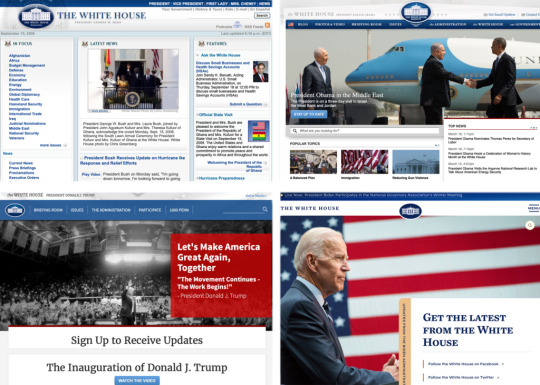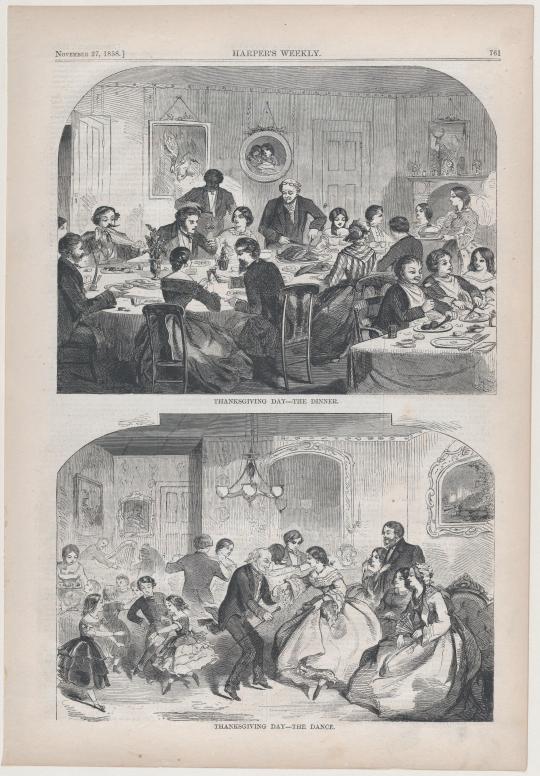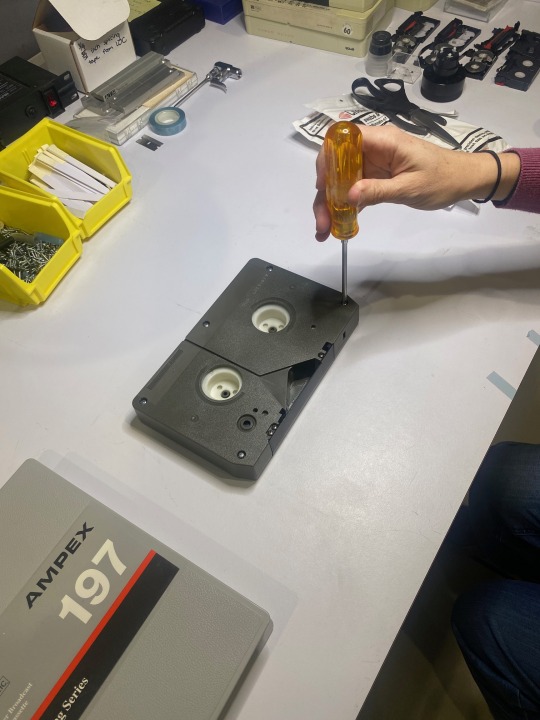A celebration of archives, archival material, and the amazing history that they protect. Expect to see a lot of strange historical finds, unique materials, and archives in the news. I throw up 5 posts a day.
Don't wanna be here? Send us removal request.
Text
It's vintage vacation season at Newberry Transcribe

Les Parisiennes à la mer, early 20th c. John Monroe collection of artist-signed postcards, Newberry Library This summer, take a trip through the past via handwritten travel documents — from pioneer journals to handwritten postcards. See our May newsletter for more info!

E. Parkinson Texas frontier travel diary, 1843, at Newberry Transcribe
33 notes
·
View notes
Text
The is a great opportunity to see cool stuff! Please share with all your bookish friends!
Applications for ABAA's Diversity Initiative Discovery Program are now Open
The Antiquarian Bookseller's Association of America is yet again providing a opportunity for those curious about the rare book trade to come to Boston, hang out with amazing book people, and learn about the business of rare books.
If you've been curious about rare books or the book trade but haven't been sure where to start, or you've seen rows and rows of old guys in suits standing behind glass cases of expensive stuff and felt a little intimidated, this program meant to help break the ice and make the whole thing less mysterious.
All you need is to be available during Nov. 5-9 and willing to travel to Boston.
Details are here, and if you have any questions, you can shoot me an ask or email Xin, who has contact info in the application.
See you in Boston!
7 notes
·
View notes
Text
Ok we give up
Of the many weird items in the Newberry's collection of valentine postcard, this set -- featuring boot-faces pursuing romance and also money -- might be the weirdest? If you have any clue as to what's going on here, we'd love to hear it in the comments...




Anthropomorphic boot valentines, ca. 1900s. John Monroe collection of artist-signed postcards
324 notes
·
View notes
Text

Every four years, before and after the U.S. presidential election, a team of libraries and research organizations, including the Internet Archive, work together to preserve material from U.S. government websites during the transition of administrations. These “End of Term” (EOT) Web Archive projects have been completed for term transitions in 2004, 2008, 2012, 2016, and 2020, with 2024 well underway. The effort preserves a record of the U.S. government as it changes over time for historical and research purposes. With two-thirds of the process complete, the 2024/2025 EOT crawl has collected more than 500 terabytes of material, including more than 100 million unique web pages. All this information, produced by the U.S. government—the largest publisher in the world—is preserved and available for public access at the Internet Archive.
33 notes
·
View notes
Text
PLEASE NOTE
If you, like us, have strong opinions about stamp issues, you may now complete Linn's Stamp News' survey of the best and worst U.S. stamps of 2024. Choose wisely.
9 notes
·
View notes
Note
I'm planning on writing a goofy mad scientist character whose science is digital humanities, archival sciences and library sciences
I still haven't figured out how to go about it from a heroes and villains POV, still researching and brainstorming
But your blog is a treasure!
Archives are so cool! And my character would love all these different posts! 🤩
Thanks for sharing such cool posts! 🌟🤩🤗
Thank you, and that sounds like a fun project!
10 notes
·
View notes
Text

From 1976 to 2000, Feminist Bookstore News (FBN) acted as a vital connector in the feminist publishing and bookstore community. An ambitious idea at the first Women in Print Conference, it quickly became a must-read newsletter for sharing resources, uplifting voices, and chronicling the dynamic work of feminist and lesbian movements.
FBN documented the nascent world of feminist publishing. Through listing books from independent feminist presses or gossiping about "bookwomen" (in the best way), it captured a changing tide in publishing, bookselling, and culture.
FBN’s archive, now part of Reveal Digital on JSTOR, is a treasure trove for researchers and dreamers.
Explore the archive and read the full article from JSTOR Daily.
🌈 Join Sinister Wisdom’s efforts to catalog every book FBN ever mentioned! Learn how to contribute.
294 notes
·
View notes
Text
The big announcement of the day is
that a couple days ago someone was searching through a VMS/VAX tape backup from 1983 of a computer that had been in Atari's coin-op division, when they found...
...a previously unknown Atari 2600 game named 'Fish'.
No one knows for sure who the programmer was, or whether this was something official or just a fun project someone was working on (since this was not found in the home console division).
But I'm here to tell you it is freaking amazing. I've thrown the ROM at every emulator I have (Stella 7 on the PC, StellaDS on the Nintendo DS, Dingux Stella on the Dingoo A-320 handheld, and of course the Atari Flashback Portable) and it plays in all of them.
Where to get the ROM as a .bin [AtariAge] A review and instructions thus figured out [AtariProtos]

474 notes
·
View notes
Text
In addition to the terrible loss of life, homes and livelihoods in the California fires, many important libraries, archives, and historical artifacts are now lost to us forever.
35 notes
·
View notes
Text

Throwback Thursday: Jeremy Furchtgott '12 lighting the Hanukkah menorah at Princeton University's Center for Jewish Life, 2010.
Photo from the Daily Princetonian.
14 notes
·
View notes
Text

Recent Acquisition - Postcard Collection
Spirit of Thanksgiving. M.W. Taggart Design Co, 1908
104 notes
·
View notes
Text

With America's Thanksgiving holiday on the horizon, it is crucial to delve deeper into the historical context and dispel the sanitized notions surrounding the colonization of the "New World" by Europeans. While the Europeans considered this land new, it was home to Indigenous peoples for generations, with rich cultures and traditions that often go unacknowledged.
Thanksgiving was established as a national holiday in 1863 by President Lincoln, during a time marred by the deeply divisive Civil War. The intention was to foster a sense of togetherness among the American people. However, the holiday's origins are rooted in notions of peaceful coexistence between European Pilgrims and the Native Americans already residing in the Plymouth region. This narrative, though popularized, is built on flimsy foundations, as it only represents a few decades of relatively minimal conflict between the Pilgrims and the Wampanoag.
Contrary to common belief, the Pilgrims' gratitude for surviving their initial winter was not directed towards the Wampanoag, whom they viewed as instruments of God's will, but rather towards God himself. It is important to acknowledge that while there may have been a period of relative peace, primary sources reveal an underlying sense of white superiority rather than a genuine atmosphere of open cultural exchange.
The initial cooperation and mutual assistance during the early 17th century gave way to a chapter in history characterized by brutal violence and the detrimental impacts of colonization. As European settlers expanded their presence, territorial disputes, cultural clashes, and the introduction of diseases took a devastating toll on Indigenous communities. The narrative of Plymouth Colony's early years must be examined in its entirety, recognizing the complexities and consequences that arose from the subsequent period of colonization.
By delving into these historical details, we can gain a more comprehensive understanding of the complexities surrounding Thanksgiving and its historical context. Learn more in this Open Access book chapter: "Pilgrims and Puritans and the Myth of the Promised Land."
🖼️ : Winslow Homer (American, Boston, Massachusetts 1836–1910 Prouts Neck, Maine), “Thanksgiving Day – The Dinner (from ‘Harper’s Weekly,’ Vol. II).” Wood engraving, November 27, 1858. The Metropolitan Museum of Art.
288 notes
·
View notes
Text
I am becoming aware of the effect a lack of trust in the media has had on people, paired with a dearth of research skills.
23K notes
·
View notes
Text

I decided to play 17th century death roulette. I immediately died of Lethargy. This is not surprising
210 notes
·
View notes
Text
The majority of the video and audio files consist of recordings from the 1970s to the 1990s, including: Fantasia Fair Conferences featuring workshops, individual and panel interviews, awards and fashion show events; video and audio interviews with prominent activists, educators and physicians such as Dallas Denny, Richard Doctor, Ariadne Kane, Allison Laing, Virginia Prince, Joann Roberts, Dr. Eugene Schrang, and Stephen Whittle; and conference audio recordings, among many other items. The UVic Libraries’ Transgender Archives is the largest collection of original materials chronicling Trans+ history and activism in the world. With evolving technology turning media into quick obsolescence, there is an urgent need to document and make accessible the fragile digital history of the Trans+ community. The unique magnetic media items (316 video recordings, 205 audio recordings) record significant historical and cultural events, and include interviews with prominent activists, educators, and physicians. Over the next two years, UVic Libraries will create advanced metadata to promote, enhance, and support future learning and research with the digitized collections by working closely and in consultation with Trans+ elders; the world’s only Chair in Transgender Studies; and with the Trans+ community at the 2025 Moving Trans History Forward conference at the University of Victoria.
37 notes
·
View notes
Photo


Published by the National Woman Suffrage Publishing Company in 1917, this little book’s pages are entirely blank. More on it here: https://publicdomainreview.org/collection/why-women-should-not-vote
2K notes
·
View notes
Text
The Audio-Video (A/V) Preservation Lab at the National Archives 📼

The Audio-Video (A/V) Preservation Lab provides appropriate digital products for National Archives and Records Administration (NARA) audio and video collections.
Join us to learn a little bit more about our work in this thread for #AskAConservator! 🧵📼


Audio and video records arrive to the lab to be digitized for preservation and access. One of the formats that we see most frequently is 1/4” audio. Sometimes we need to splice leader onto the heads or tails of a 1/4” reel in order to capture all of the content.




This is what audio looks like once it has been digitized for preservation. Sometimes we bake tapes before playback to reverse the effects of sticky shed or soft binder syndrome. We also work on newer formats like miniDiscs which were popular during the late 1990s and early 2000s.
When we digitize a videotape we use additional tools like test signals, time-base correctors, waveforms and vectorscopes to ensure that the color and brightness levels are correct.




One of the formats that we digitize regularly is VHS video. We have seen these tapes range in run time from as little as 2 minutes to as long as 9 hours!
Sometimes we need to rehouse videotapes into new cassettes in order to successfully play them back. Typically we clean tapes before we play them back as well. Here are a couple images of one of our Umatic or 3/4-inch cleaners.
Thank you for your interest in the Audio-Video Preservation Lab at NARA! We hope you enjoyed learning a bit more about the work that we do!
https://www.archives.gov/pres…/products/definitions/av-lab
310 notes
·
View notes